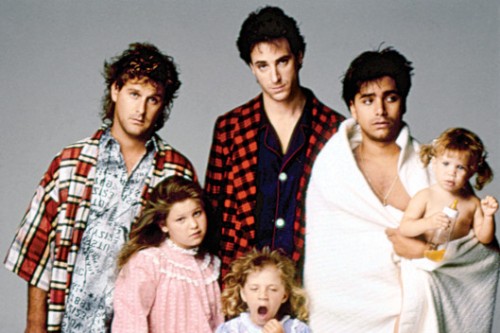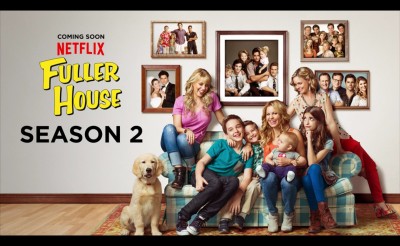“Basic,” “painful,” “embarrassing,” and comparable to necrophilia: a small sampling from the reviews of Fuller House over the last couple of months. The Netflix original, a remake of the classic 1980s/90s sitcom Full House, may become a lasting icon of terrible, terrible, really quite bad moments in television history. The kindest sentiment I came across was expressed by Maureen Ryan in Variety, who generously conceded that “[t]hose who enjoyed the original…and don’t mind its patented blend of cloying sentiment, cutesy mugging and predictable humor might find enjoyment in this unspectacular retread.”
Naturally, I binge watched. Of course, it was as awful as expected. Maybe worse. The remake is identical to the original in both form and feel. The characters are unidimensional, the story is episodic and shallow, the catch-phrases are somehow even less catchy, and oh the racism. Kimmy Gibbler’s ex-husband is a cringe-worthy Latino caricature whose lustful propensities can hardly be contained and the 11th episode centers around an Indian themed party which acts as the foil for copious jokes, includes an almost entirely white cast dressed in saris and jamas, and culminates with the party attendees spontaneously breaking into a choreographed dance for which mysteriously, they each know all of the moves. That last part may or may not be racist, but as a storytelling decision, asks the audience to suspend an unfair amount of belief.
Fuller House could not have been worse if it tried. Which is why I reinterpreted the season as though it did try. And then, Fuller House was very good.
I watched the Fuller House season as though it was not just bad, but actively bad. From this angle, the decision to make a new show that is entirely unchanged from 30 years ago is a smart and creative vehicle for powerful social commentary. For the creators to leave this fact unmentioned is a piece of artistic genius.
That social commentary was the creators’ and actors’ intent is by no means a solid fact, nor even a well supported one. On the contrary, there is little reason to believe that the show is anything more than it appears at face value. But this is irrelevant. Media consumption is always participatory and audiences play a creative role. How a show is written matters, as does how the show is read. My reading of Fuller House—as a show out of time— transformed what was vapid, vacuous, and appallingly offensive, into a compelling piece of television programming.
Watching a show retrospectively is distinct from remaking the show in a new historical moment. The failings of the latter are decidedly more jarring and less forgivable. New cultural products are responsible for the advances in technology, storytelling, and identity politics of their time. For instance, Archie Bunker’s racial epithets and Ralph Kranden’s continued threats to send his wife “straight to the moon” would never fly today. Similarly, Saved by the Bell would only ever get picked up if Jessie Spanno’s caffeine-pill problem was a cocaine problem, intersected with storylines that wouldn’t pay off for several more seasons, and excluded any and all scenes that transitioned from dancing to crying.
Viewers may look back upon older media products with a combination of nostalgia and embarrassment, but also an implicit acceptance about the way things used to be. In contrast, an anachronistic production demonstrates how “the way things used to be” both reflected and informed normative logic. What was once popular was popular for a reason, and most certainly shaped how viewers understood themselves and others. That is, media products are formative, and the kind of culture that media products form becomes starkly clear when viewed from the future.
An anachronistic cultural product shows us to ourselves through our own nostalgia—and in the case of Fuller House, it is unflattering. It not only reveals the viewers’ formative past, but also pushes viewers to face the ways in which contemporary media products are of this particular time. In doing so it facilitates the uncomfortable question: will the media of today be acceptable in the near and distant future? This question applies to both broadcast and social media, and in many cases, the answer is no, this will not be acceptable. For instance, Facebook’s “real name” policy, Twilight’s implicit romanticization of abuse, and Snapchat’s Bob Marley filter will be recalled as emblems of antiquated values. Today, they are the subject of debate. 30 Years from now, if presented unchanged, they may well be shocking affronts–and yet these are all formative media. They reflect us, shape us, and are part of us. To re-present them out of time, in the manner of Fuller House, insists that the cultural milieu address what it made, what it enjoyed, and what that says about who they were and how they are now.
As a show out of time, Fuller House blares its inadequacy. It’s really just the worst. Luckily, media consumption is always active. So fuck it, I’m reading Fuller House as social commentary and basking in its brilliance. I highly recommend this tactic because next on deck:
Jenny Davis is on Twitter @Jenny_L_Davis


